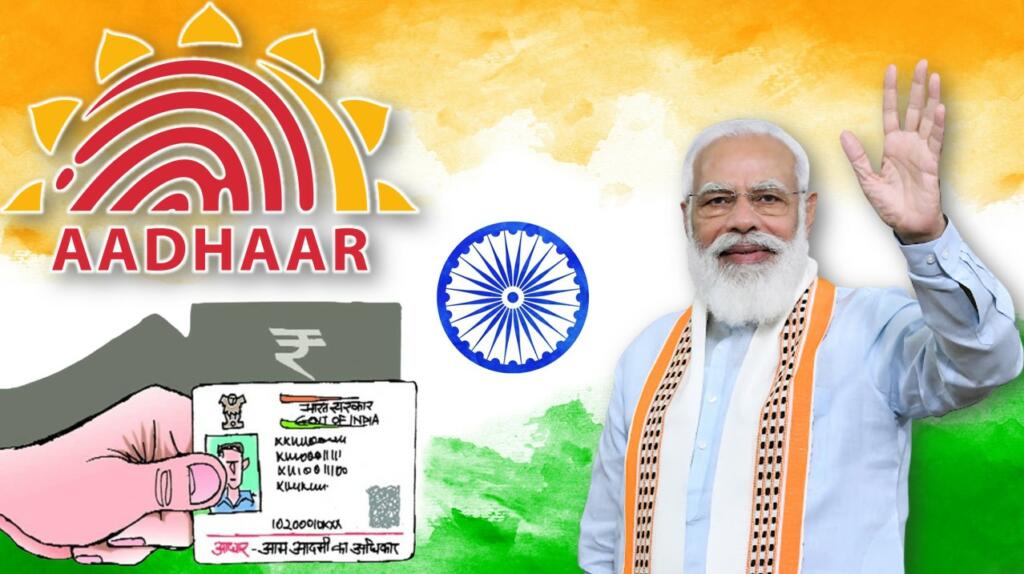- In a recent interview with News Agency ANI, the CEO of UIDAI, Saurabh Garg, said 300 schemes of the Central Government and 400 schemes of state Governments have been linked with Aadhaar. The Government has saved Rs.2.25 lakh crore by Direct Benefit Transfers (DBT) to the genuine beneficiaries.
- From financial inclusion to one-stop identity verification for SIM cards, college admission, travelling and so on, Aadhaar has brought revolutionary changes in the life of Indians.
- From linking Voter ID cards to Aadhaar to ensure single voter ID of every individual to live census using the unique identity for birth registration and death certificate, there are a plethora of imagined use cases on which the government is working.
In the last decade, the Aadhaar card has become a very deeply embedded part of the lifestyle of Indians. From financial inclusion to one-stop identity verification for SIM cards, college admission, travelling and so on, Aadhaar has brought revolutionary changes in the life of Indians. The Unique identity project has not been useful only for the people, but the government has also saved billions of dollars in the last few years.
In a recent interview with News Agency ANI, the CEO of UIDAI said 300 schemes of the Central Government and 400 schemes of state Governments have been linked with Aadhaar. The Government has saved Rs.2.25 lakh crore by Direct Benefit Transfers (DBT) to the genuine beneficiaries. This figure is for the Central Government schemes only. “If we add schemes of state governments then this figure will go up further,” he added.
In the future, the use cases and facilities provided through Aadhaar will further expand. From linking Voter ID cards to Aadhaar to ensure single voter ID of every individual to live census using the unique identity for birth registration and death certificate, there are a plethora of imagined use cases on which the government is working and some of them will definitely become successful.
“We want to use new technologies like Artificial Intelligence, Blockchain and machine learning to strengthen Aadhaar and to make it more secure and the last thing I want to focus on is information security and privacy. Aadhaar architecture is designed keeping privacy in mind,” said Saurabh Garg, Chief Executive Officer of Unique Identification Authority of India (UIDAI).
Aadhaar has ensured that leakage from the welfare schemes comes to an end. Millions of illegal beneficiaries of various welfare schemes have been weeded out of the system. In MGNREGA for instance, since job cards and accounts of the labourers were linked to Aadhaar, a large number of bogus beneficiaries were caught. Similarly, due to the DBT scheme, 98.8 lakh bogus beneficiaries were caught in schemes under the Ministry of Women and Child Development.
This is data regarding the union government only, while many state governments also use the JAM trinity for the delivery of subsidies and other welfare transfers like scholarships. The state governments, whose welfare expenditure is massive (in fact, more than the Union government) are expected to have saved lakhs of crores rupees in the last six years.
“The JAM Trinity (Jan Dhan-Aadhaar-mobile) has eliminated the web of middlemen. This is a successful example of preventing corruption through technology. Earlier in the absence of Aadhaar linkage, money had been swindled in the name of bogus labourers. Similarly, from PDS to fertilizers, the misuse of government funds in all the schemes connected with the petroleum ministry has been stopped,” said an official who was involved in the monitoring of DBT schemes.
Read More: Direct Benefit Transfer (DBT): A game-changer in public service delivery system
Although there are still problems with welfare delivery, thanks to bonhomie between corrupt public sector bank employees and state government bank employees, however, the duplication of beneficiaries has been certainly eliminated. And this has saved lakhs of crores of rupees to the central as well as state government. This money can now be used further for the welfare of the masses.
Through technology, India can take a great leap forward in development and the Modi government is trying to deliver the same. Aadhaar card, JAM trinity, Health ID card- all these are examples of how technology can be leveraged for the welfare of the masses efficiently and transparently. The government has the opportunity to deliver maximum welfare with minimum bureaucratic hassle- and minimum expenditure too- by capitalizing on digital innovations, and the Modi government is trying to do exactly the same.
